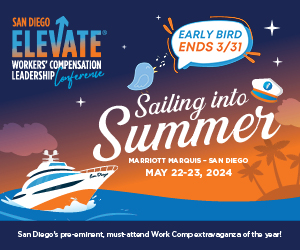Big Macs, Booze and Bricks
Monday, June 4, 2012 | 0
Two Murfreesboro, Tenn. men, miffed at their incorrect order from a McDonald's drive-through, went back to the restaurant for a correction. They claim the manager was less than helpful, dropping the "F-bomb" on them, and telling them to take a hike.
They did. Straight home to a pile of booze.
Hours later, the hammered pair returned to the establishment and hurled bricks through the front window and the window located in the drive-through. Two McDonald-ites were injured.
Is the employer liable in any way for the injuries caused by the rampage of these drunken foodies? If so, under what theory?
<b>Workers' Compensation.</b>
In Tennessee, an employee injured in the workplace as a result of an assault by a third party may be entitled to benefits under the State's workers' compensation statute. Recovery will depend upon the facts giving rise to the assault.
As stated by the Supreme Court in Wait v. Travelers Indem. Co. of Illinois, 240 S.W.3d 220, 227 (Tenn. 2007), "Injuries from assaults occurring in the workplace but originating from inherently private disputes, such as domestic disputes, are not compensable" under the State's workers' compensation scheme. On the other hand, if "indiscriminate exposure to the general public" is part of an employee's job, then the actions of persons on the premises can be considered a "hazard of the employment." In the latter case, courts will typically find a causal relationship existed between the injured worker's employment and the assault. See Beck v. State, 779 S.W.2d 367, 371 (Tenn. 1989).
In the case of the brick-throwing boozers, it appears that any workplace injuries sustained by the restaurant employees would be compensable since their jobs required them to be exposed to the general public.
<b>OSHA and General Negligence Theories.</b>
Employers may also be held liable for injuries to employees caused by workplace violence under OSHA and general negligence theories. Both approaches to recovery require an injured employee to show that the employer knew or should have known of a dangerous situation, and failed to warn the employee of the danger or otherwise prevent it from occurring.
In this case, it does not appear the employer could have reasonably known that these inebriated idiots would return bearing gifts in the form of flying bricks. Still, if it is shown that the manager actually provoked the attacks by cursing the assailants or otherwise fanning the flames of violence, liability might attach.
If you have any questions regarding this topic, please contact the Author or any member of our Labor and Employment Group.
<i>Charles D. Lawson is of counsel for the Grant, Konvalinka & Harrison law firm in Chattanooga, Tenn. This column was reprinted with his permission from the firm's Labor and Employment blog.</i>




Comments